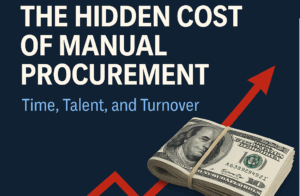For analytical roles—such as data analysts, business intelligence specialists, supply chain analysts, and financial analysts, which rely heavily on systems and data to drive decision-making and daily duties—balancing immediate demands with ongoing responsibilities and long-term objectives can feel like a juggling act. These positions require professionals to handle vast amounts of information while ensuring their insights and deliverables directly support organizational goals. Given the constant influx of tasks and data, prioritizing work is essential, especially in roles where data-driven actions influence business success.
However, analytical professionals frequently fall into a pattern of “sharking and patrolling” their daily tasks, focusing on pressing issues at the expense of broader responsibilities. This reactive approach can divert attention from the full scope of work required, leading to gaps in routine duties or missed opportunities for improvement. The 3 Cs of Work Prioritization (1) —Critical Items, Cadenced Activities, and Continuous Improvement Initiatives—provide a structured framework that helps professionals stay grounded in their full range of responsibilities. By standardizing work for analytical functions, the 3 Cs ensure the complete scope of duties is defined, prioritized, and actioned each day, helping analysts balance immediate needs with long-term objectives.
The 3 Cs framework aligns closely with the Institute of Industrial and Systems Engineers (IISE) Body of Knowledge area of work design. By organizing and categorizing tasks, this model offers a structured, repeatable approach emphasizing efficiency, accountability, and focus—key principles of effective work design. Rather than allowing high-priority demands to dominate the day, the 3 Cs clarify how each category of work fits into the analyst’s role, fostering a balanced, sustainable approach to task management. In this way, the framework promotes focus while aligning with IISE’s emphasis on systematic work design that optimizes productivity and reduces stress.
The first category, Critical Items, includes the most urgent tasks requiring immediate attention, often because they carry significant impact or risk. For analytical roles, these may involve resolving high-stakes issues, troubleshooting operational outages, or responding to urgent requests from key stakeholders. Promptly addressing critical items upholds stakeholder trust, minimizes disruptions, and aligns efforts with pressing organizational needs.
In contrast, Cadenced Activities encompass recurring tasks that bring structure and consistency to analytical work. These predictable tasks—such as regular reporting, updates, or performance reviews—support efficient time management and help analysts establish dependable workflows. Standardizing cadenced activities enables regular, reliable insights and reassures stakeholders of the timeliness and dependability of the work. For instance, weekly reports on key performance indicators (KPIs), managing system-generated messages, or scheduled quality audits ensure uninterrupted core information flows, bolstering data-driven decisions across the organization.
The final element, Continuous Improvement Initiatives, focuses on long-term optimization, risk mitigation, and innovation. By dedicating time to process refinements, analysts can identify areas for improvement, explore automation, and engage in root-cause analysis. These initiatives improve efficiency, bolster resilience, and support sustainable practices. A continuous improvement mindset enables analysts to move beyond routine tasks to address larger objectives, such as optimizing workflows, reducing manual workloads, and implementing strategies that prevent future disruptions.
Integrating The 3 Cs of Work Prioritization—Critical Items, Cadenced Activities, and Continuous Improvement Initiatives—enables analysts to work more effectively. A well-rounded approach might start with addressing critical items to maintain service standards, followed by cadenced activities that establish a structured, predictable workflow. Regularly setting aside time for continuous improvement allows analysts to refine processes, staying agile and prepared for the future.
Practical examples illustrate the 3 Cs in action. For Critical Items, a supply chain analyst might prioritize resolving sudden shortages or high-priority supplier issues that impact production timelines, helping prevent costly disruptions and maintaining service standards. For Cadenced Activities, a data analyst might establish regular schedules for updating dashboards, preparing performance reports, or conducting routine data quality checks. These predictable tasks ensure essential information flows reliably and maintain data integrity. For Continuous Improvement Initiatives, analysts could identify opportunities for automating routine processes, such as automating data pulls or report generation. Additionally, root cause and Lean analysis can reveal bottlenecks and opportunities, supporting enhancements that increase efficiency, reduce costs, and mitigate risk.
Ultimately, The 3 Cs of Work Prioritization provide analytical professionals with a comprehensive framework for managing nuanced workflows and balancing immediate needs, routine responsibilities, and forward-looking enhancements. By categorizing tasks into these distinct yet complementary areas, analysts streamline focus and maximize impact, ensuring their work is both efficient and aligned with long-term organizational goals. This approach supports both individual productivity and the broader effectiveness of the analytics function, positioning teams to thrive in data-centric environments where demands are high and adaptability is essential.
1 Beil, T. (2024). The 3 Cs of Work Prioritization (unpublished manuscript submitted for copyright).
Publication Date: November 1, 2024






